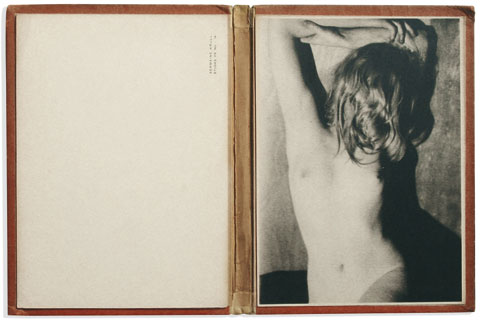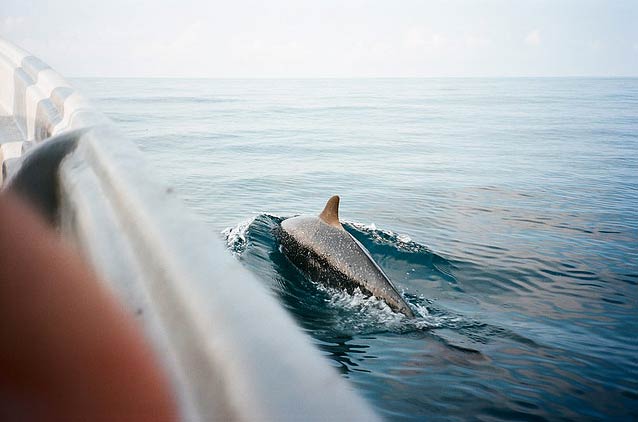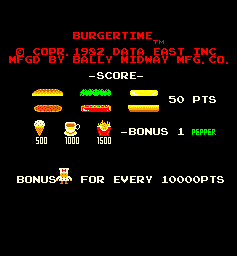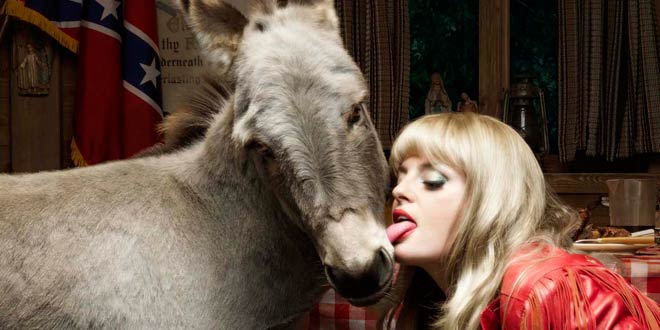
|
|
|

The first brain scans of men and women having sex and reaching orgasm have revealed striking differences in the way each experiences sexual pleasure. While male brains focus heavily on the physical stimulation involved in sexual contact, this is just one part of a much more complex picture for women, scientists in the Netherlands have found.
The key to female arousal seems rather to be deep relaxation and a lack of anxiety, with direct sensory input from the genitals playing a less critical role.
The scans show that during sexual activity, the parts of the female brain responsible for processing fear, anxiety and emotion start to relax and reduce in activity. This reaches a peak at orgasm, when the female brain’s emotion centres are effectively closed down to produce an almost trance-like state.
The male brain was harder to study during orgasm, because of its shorter duration in men, but the scans nonetheless revealed important differences. Emotion centres were deactivated, though apparently less intensely than in women, and men also appear to concentrate more on the sensations transmitted from the genitals to the brain.
“Men find it more important to be stimulated on the penis than women find it to be stimulated on the clitoris,” Gert Holstege of the University of Groningen said.
This suggests that for men, the physical aspects of sex play a much more significant part in arousal than they do for women, for whom ambience, mood and relaxation are at least as important. (…)
The experiments also revealed a rather surprising effect: both men and women found it easier to have an orgasm when they kept their socks on. (…)
The scans also show that while women may be able to fool their partners with a fake orgasm, the difference is obvious in the brain. Parts of the brain that handle conscious movement light up during fake orgasms but not during real ones, while emotion centres close down during the real thing but never when a woman is pretending.
{ Times | Continue reading }
photo { Germaine Krull }
brain, neurosciences, relationships, science, sex-oriented |
January 10th, 2011

Sometime in late 2011, according to the UN Population Division, there will be seven billion of us. (…)
Leeuwenhoek concluded there couldn’t be more than 13.385 billion people on Earth—a small number indeed compared with the 150 billion sperm cells of a single codfish! This cheerful little calculation, writes population biologist Joel Cohen in his book How Many People Can the Earth Support?, may have been the first attempt to give a quantitative answer to a question that has become far more pressing now than it was in the 17th century. Most answers these days are far from cheerful.
And the explosion, though it is slowing, is far from over. Not only are people living longer, but so many women across the world are now in their childbearing years—1.8 billion—that the global population will keep growing for another few decades at least. (…)
With the population still growing by about 80 million each year, it’s hard not to be alarmed. Right now on Earth, water tables are falling, soil is eroding, glaciers are melting, and fish stocks are vanishing. Close to a billion people go hungry each day. Decades from now, there will likely be two billion more mouths to feed, mostly in poor countries. There will be billions more people wanting and deserving to boost themselves out of poverty. If they follow the path blazed by wealthy countries—clearing forests, burning coal and oil, freely scattering fertilizers and pesticides—they too will be stepping hard on the planet’s natural resources. How exactly is this going to work?
{ National Geographics | Continue reading }
photo { Andres Gonzalez }
uh oh, within the world |
January 10th, 2011

The Soviet and Japanese threats to American supremacy proved chimerical. (…) The Chinese challenge to the United States is more serious for both economic and demographic reasons. The Soviet Union collapsed because its economic system was highly inefficient, a fatal flaw that was disguised for a long time because the USSR never attempted to compete on world markets. China, by contrast, has proved its economic prowess on the global stage. Its economy has been growing at 9 to 10 percent a year, on average, for roughly three decades. It is now the world’s leading exporter and its biggest manufacturer, and it is sitting on more than $2.5 trillion of foreign reserves. Chinese goods compete all over the world. This is no Soviet-style economic basket case.
Japan, of course, also experienced many years of rapid economic growth and is still an export powerhouse. But it was never a plausible candidate to be No. 1. The Japanese population is less than half that of the United States, which means that the average Japanese person would have to be more than twice as rich as the average American before Japan’s economy surpassed America’s. That was never going to happen. By contrast, China’s population is more than four times that of the United States. The famous projection by Goldman Sachs that China’s economy will be bigger than that of the United States by 2027 was made before the 2008 economic crash. At the current pace, China could be No. 1 well before then.
{ Foreign Policy | Continue reading }
photo { Christopher Schreck }
U.S., asia, economics, within the world |
January 10th, 2011

Last March, the small Parisian gallery 12 Mail devoted itself to a retrospective of one of my favorite publications: Didier Lestrade’s pioneering gay zine Magazine. The walls were collaged with the incredibly influential homoerotic photography and drawings featured in Magazine throughout the course of its seven-year run from 1980 through 1987, as well as framed portraits of legendary interview subjects such as Sylvester, Jimmy Somerville, Divine, Edmund White, Erté, and Tom of Finland. With the younger generation’s interest reignited, Didier has now begun uploading the entire Magazine archive to his website, as a gift to both the fans and the Tumblr crowd, who he hopes will go crazy grabbing pictures and articles for their own sites. After many years working as an outspoken AIDS activist, founding and leading the first French chapter of ACT UP, and co-founding Têtu, Lestrade moved to the French countryside, where he’s busy writing for minorites.org and working on his next book. We spoke by phone last week.
{ Butt | Continue reading }
photo { Magazine, Number 3/4, page 85 | more: The entire collection of Magazine, 1980-1987 }
experience, flashback, press |
January 10th, 2011
visual design |
January 10th, 2011
music |
January 7th, 2011

The thing makes a full circle with 20 years inside of it. Amazing, isn’t it? And what wonderful years and sad ending ones. I am back in the little house. It hasn’t changed and I wonder how much I have. For two days I have been cutting the lower limbs off the pine trees to let some light into the garden so that I can raise some flowers. Lots of red geraniums and fuchsias. The fireplace still burns. I will be painting the house for a long time I guess. And all of it seems good.
There are moments of panic but those are natural I suppose. And then sometimes it seems to me that nothing whatever has happened. As though it was the time even before Carol. Tonight the damp fog is down and you can feel it on your face. I can hear the bell buoy off the point. The only proof of course will be whether I can work — whether there is any life in me.
{ John Steinbeck, letters | This Recording | Continue reading | Thanks Tim }
photo { Tony Stamolis }
experience, ideas |
January 7th, 2011

The art world told us that anything could be art, so long as an artist said it was. Almost anyone who goes through a gallery door is likely to have heard about Duchamp and his urinal. The art world is less good at explaining how certain people get to be artists and decide what art is for the rest of us. This process of selection might not make aesthetic or philosophical sense, but it works anyway. It’s about power: whoever holds it gets to officiate and decide. The “art world” is a way of conserving, controlling and assigning this precious resource.
{ Design Observer | Continue reading }
art, economics, ideas |
January 5th, 2011

Tracey Emin’s Everyone I Have Ever Slept With 1963–1995 was a tent appliquéd with 102 names of the people she had slept with up to the time of its creation in 1995. The title is often misinterpreted, it is to be taken as a literal statement: “Some I’d had a shag with in bed or against a wall some I had just slept with, like my grandma.” The names include family, friends, drinking partners, lovers and even two numbered foetuses.
In 2004, the tent was destroyed in a fire at the East London Momart warehouse, along with two of Emin’s other works and some 100 more from Saatchi’s collection, including works by Damien Hirst, Jake and Dinos Chapman and Martin Maloney.
{ Wikipedia | Continue reading }
experience, visual design |
January 5th, 2011

Also known as “Papa Doc,” Francois Duvalier was President for Life of Haiti until 1971. Among other things, Papa Doc claimed to be the Voodoo spirit of death, Baron Samedi. This kind of hubris is exactly what you want in your elected officials.
After a heart attack plunged him into a nine-hour coma in 1959 that left him with massive brain damage, things kind of went downhill. He demanded that his temporary successor, Clement Barbot, be arrested, but when they couldn’t find Barbot, Papa Doc’s people told him that they believed he had transformed into a large black dog.
Understandably, Papa Doc ordered the deaths of all black dogs, because as we have mentioned, he was fucking insane. Eventually Barbot was caught and executed, and Papa Doc kept his head. You know, for Voodoo.
In 1961, he ordered new elections despite the fact that his “term” wasn’t up until 1963. The move completely baffled everybody until the results of the election, which saw Papa Doc win with 100 percent of the votes.
Papa Doc eventually died in 1971 of natural causes, but not before telling the world that he alone was responsible for John F. Kennedy’s assassination by way of a Voodoo curse. He even sent someone to Kennedy’s grave to collect the air around it so he could use it in a spell to control Kennedy’s soul. By all accounts, Voodoo is kind of awesome.
{ Cracked | Continue reading }
flashback, weirdos |
January 5th, 2011

{ imp photographed by paul nett }
dolphins |
December 17th, 2010

Life is not a long slow decline from sunlit uplands towards the valley of death. It is, rather, a U-bend.
When people start out on adult life, they are, on average, pretty cheerful. Things go downhill from youth to middle age until they reach a nadir commonly known as the mid-life crisis. So far, so familiar. The surprising part happens after that. Although as people move towards old age they lose things they treasure—vitality, mental sharpness and looks—they also gain what people spend their lives pursuing: happiness.
This curious finding has emerged from a new branch of economics that seeks a more satisfactory measure than money of human well-being. Conventional economics uses money as a proxy for utility—the dismal way in which the discipline talks about happiness. But some economists, unconvinced that there is a direct relationship between money and well-being, have decided to go to the nub of the matter and measure happiness itself.
{ The Economist | Continue reading }
photo { The Haven of Contentment }
ideas, psychology |
December 17th, 2010

When it comes to genes, evolutionary biologists have traditionally favored seniority. Genes thought to be most essential to life must be ancient and conserved, the assumption goes, handed down from species to species as the basic instructions of life. That sharing is evident in early developmental stages, which 19th-century biologist Ernst Haeckel observed to be very similar between different organisms in his famed recapitulation theory. The genes that drive those early stages of development are also shared by creatures as different as flies, mice, and humans, lending support to the idea that the most important genes for life go a long way back on the evolutionary tree.
By comparison, new genes haven’t gotten nearly as much credit. Arising more recently in evolution’s history, rookies that only count their age in tens of millions of years were thought to be less important - providing new functions and features that were nice, but not essential. If old genes were the bread and butter of life…
“Maybe the new genes serve a function like vinegar or soy sauce,” said Manyuan Long, professor of ecology & evolution at the University of Chicago. “They make your life better, change behavior, help a male find females more efficiently, but that’s all.”
But that ageist perspective is shaken in this week’s Science, courtesy of an exciting new study from Long’s laboratory. Using the fly species Drosophila melanogaster, Long, graduate student Sidi Chen, and postdoctoral researcher Yong Zhang tested whether silencing a new gene would be as fatal as silencing an old one. (…)
Another surprise implication of the data is the speed with which new genes can become an indispensable part of a species’ genome. When a new gene appears in a species due to evolution, one would not expect it to be immediately crucial - otherwise, how did the species survive before its arrival? But like a new employee in an office, a new gene can make itself essential by forming relationships with older, essential genes through what are called gene-gene interactions. Before long, the new gene has become a key part of the species’ survival…and there’s no turning back.
{ University of Chicago | Continue reading }
photo { Jeremy Liebman }
genes |
December 17th, 2010

Cannibalism is part of the great cultural legacies of our species. In times past, for instance, we would eat our honoured dead to gain their wisdom.
In medieval times, it was believed that memories were stored in the cerebrospinal fluid. Sadly, it seems that memory cannot be transferred biochemically. (…)
In the Polynesian islands, human meat has always been known as “long pig,” because people taste like pork.
{ Warren Ellis/Wired | Continue reading }
flashback, food, drinks, restaurants, weirdos |
December 17th, 2010

In a study published in May, Fisher and her colleagues asked 15 people who had recently been dumped but were still in love to consider two pictures—one of the former partner and one of a neutral acquaintance—while an MRI scanner measured their brain activity. When looking at their exes, the spurned lovers showed activity in parts of the brain’s reward system, just as happy lovers do. But the neural pathways associated with cravings and addictions were activated too, as was a brain region associated with the distress that accompanies physical pain.
Rejected lovers also showed increased neural response in regions involved in assessing behavior and controlling emotions. “These people were working on the problem, thinking, what did I do, what should I do next, what did I learn from this,” Fisher says. And the longer ago the breakup was, the weaker the activity in the attachment-linked region. In other words: Love hurts, but time heals.
{ Discover | Continue reading }
photo { Deborah Kerr and Burt Lancaster, From Here to Eternity, 1953 }
brain, relationships, science |
December 17th, 2010

New research in Psychological Science found that the fear of being the target of malicious envy makes people act nicer to people they think might be jealous of them.
There are two types of envy says Niels van de Ven of Tilburg University and his coauthors: benign envy and malicious envy. People with benign envy are motivated to improve themselves, so they could be more like the person they envied. People with malicious envy want to bring the people above them down.
{ APS | Continue reading }
photo { David Stewart }
psychology, relationships |
December 17th, 2010

One in every 10,000 chickens is born gynandromorphic: half male and half female.
Developmental biologist Michael Clinton expected to find that the birds had abnormal cells. Instead he found healthy male and female cells. These cells keep their identity even when injected into an embryo of the opposite sex, indicating that their gender is innate.
The discovery that each cell in a chicken can be inherently male or female is a huge departure from biological dogma, which holds that hormones control sex characteristics in vertebrates. Gender-imprinted cells may exist in us, too. Male and female cells might respond slightly differently to hormonal signals, which may partially explain differences in male and female behavior and susceptibility to some diseases.
{ Discover | Continue reading }
photo { Brandon Pavan }
animals, science |
December 17th, 2010

Harder-to-read fonts boost student learning. Connor Diemand-Yauman and his colleagues think the effect occurs because fonts that are more awkward to read encourage deeper processing of the to-be-learned material.
{ BPS | Continue reading }
science, visual design |
December 17th, 2010
ideas, new york, photogs |
December 17th, 2010





















